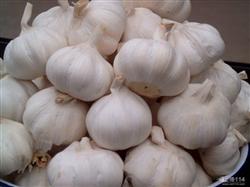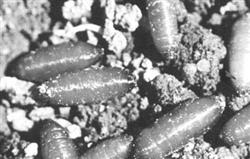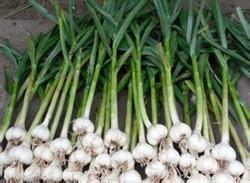Garlic high yield to understand the characteristics of fertilizer

Garlic is a bulb crop which needs a large amount of fertilizer and is more tolerant to fertilizer. it is suitable to be cultivated in sandy loam soil which is rich in organic matter, loose and fertile soil surface, comprehensive nutrition, good water and fertilizer retention and ventilation. According to the study: for every 1000 kg of fresh garlic, it needs 4.5kg of nitrogen, 1.1kg of phosphorus and 4.1kg of potassium, the proportion is 3:1:3. Therefore, on the basis of fully understanding the growth characteristics and fertilizer requirements of garlic, scientific fertilization is the key to achieve high quality and high yield of garlic. According to the growth characteristics and fertilizer demand characteristics of garlic, the fertilization principles of organic fertilizer, chemical fertilizer, base fertilizer, topdressing, coarse fertilizer and chemical fertilizer should be adhered to in order to meet the needs of nutrient elements in the growth and development of garlic. ⑴ application sufficient base fertilizer: because the garlic root system is shallow, the root hair is few, the fertilizer absorption ability is poor, so the quality requirement of the base fertilizer (especially the harvest of garlic moss and garlic for the purpose) is higher, should be based on the mature barnyard manure or cake fertilizer, with a certain amount of phosphorus and potassium compound fertilizer, generally 5000 kg of high quality organic fertilizer per mu, 100kg of cake fertilizer, 25-35kg of nitrogen, phosphorus and potassium compound fertilizer. Early application of seedling-promoting fertilizer in ⑵: early application of seedling-promoting fertilizer is beneficial to promote rapid rooting and seedling growth after emergence and improve the overwintering performance of autumn-sown garlic. Seedling promotion fertilizer should be carried out about 15 days after emergence. Except for those with high fertility and sufficient base fertilizer, seedling promotion fertilizer can not be applied, generally 15-20 kg of urea can be applied per mu. ⑶ increased application of returning green fertilizer: returning green fertilizer is generally applied when the temperature rises in spring and the heart leaves and roots of garlic begin to grow. It is appropriate to apply 20-30kg urea per mu. ⑷ re-application of moss fertilizer should be carried out when the differentiation of scale bud and flower bud and the breeding of garlic moss are completed. As the growth boom has entered at this time, the growth and fertilizer requirements have reached the peak, so it is generally required to re-apply, accounting for about 40% of the total topdressing, accounting for about 50% of the total topdressing, and applying 25-30 kg of nitrogen, phosphorus and potassium compound fertilizer per mu. ⑸ skillfully apply Zhuangtou fertilizer: Zhuangtou fertilizer should be carried out 25-30 days after bolting fertilizer application, Zhuangtou fertilizer is mainly nitrogen fertilizer, combined with a small amount of phosphorus and potassium fertilizer, in order to meet the nutrient needs of garlic bolting and garlic expansion, generally applying high nitrogen compound fertilizer about 15 kg per mu.
- Prev

Occurrence regularity and control methods of garlic root maggots
Root maggot is a general term for the larval stage of Diptera pests that damage crops such as garlic. In recent years, the occurrence of garlic root maggots is increasing year by year. The damage caused by root maggots can reduce the yield of garlic and have a great impact on the quality of garlic, and the economic loss is serious when the damage is serious. Garlic root maggots (larvae) generally gather in the garlic root and.
- Next

It is necessary to understand the characteristics of fertilizer requirement for garlic to achieve high yield.
Garlic is a bulb crop which needs a large amount of fertilizer and is more tolerant to fertilizer. it is suitable to be cultivated in sandy loam soil which is rich in organic matter, loose and fertile soil surface, comprehensive nutrition, good water and fertilizer retention and ventilation. According to the study, for every 1000 kg of fresh garlic, it needs 4. 5-5 kg nitrogen, 1. 1-1. 3 kg phosphorus and 4. 1-4. 7 kg potassium.
Related
- Where is it suitable to grow horseradish in China? it is expected to see the middle altitude horseradish in Alishan.
- How to prevent tomato virus disease reasonably? (Control methods included)
- Many people like to plant towel gourd on the balcony. What are the main points of this method and management?
- What crops can chili peppers be mixed with?
- Fertilization techniques and matters needing attention in Tomato
- What are the grafting techniques for peach seedlings in spring?
- Harm and control methods of root swelling disease of Chinese cabbage
- What are the pests of sweet potatoes? How to prevent and cure it?
- Symptoms, causes and Control methods of navel Rot in Tomato
- The cause of "Cucumber rotten bibcock" in Farmers' planting Cucumber and its Control Plan

